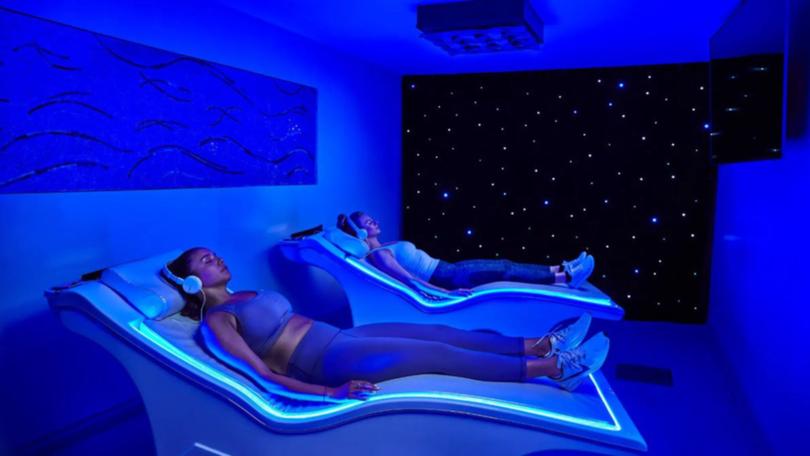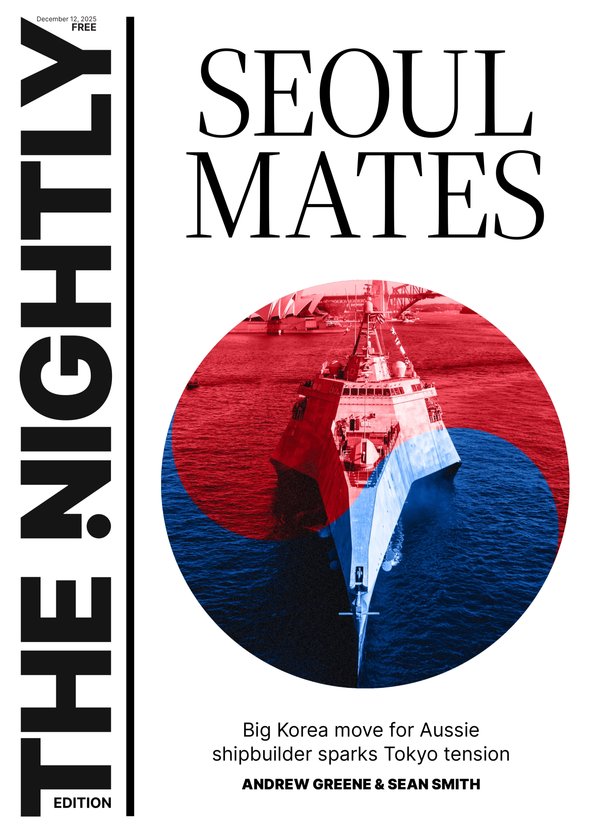The New York Times: $1,780 to Spend the Night in a ‘Cocoon’? Hotels Are Betting on Sleep Tourism

To sleep, perchance to dream. Or if not dream, at least to feel vaguely rested the next day, especially on vacation. Is that too much to ask?
For many people, yes. The United States is tired, according to the National Sleep Foundation, the Centers for Disease Control and Prevention and the National Institutes of Health, and there is a link between poor sleep and depression, the NSF’s 2023 Sleep in America poll found.
In the hospitality world, that’s a business opportunity. Hilton’s 2024 trends report revealed that the main reason people travel is to rest and recharge.
Sign up to The Nightly's newsletters.
Get the first look at the digital newspaper, curated daily stories and breaking headlines delivered to your inbox.
By continuing you agree to our Terms and Privacy Policy.“Hotels locked in a death match with Airbnb have begun to explore ways in which to compete by offering services and amenities around the primary purpose of a hotel stay: a restful night’s sleep,” said Chekitan Dev, a distinguished professor at the Cornell University Nolan School of Hotel Administration.
“The earlier paradigm of a vacation was that sleeping was the most boring thing you could do while on holiday,” said Kaushik Vardharajan, an associate professor at the Boston University School of Hospitality Administration.
“It is only during the last 10 years or so that we have as a society started talking about the importance of sleep from a health and wellness perspective.”
Now, he said, a good night’s rest isn’t just a selling point for hotels; it’s a “whole fast-growing industry.”
From AI-assisted beds to on-call hypnotherapists, today’s sleep tourism is, essentially, an old dog with new tricks. “This is around the seventh or eighth time this has come up as kind of a topic” since the mid-1980s, said Bjorn Hanson, an adjunct professor at the New York University Jonathan M. Tisch Center of Hospitality. Even before that, luxury hotels introduced perks for better sleep, like pillow menus in the 1960s. Other amenities (blackout curtains, white noise machines) followed.
These days hotels are going well beyond those basics to capture the business of sleep seekers. Here’s what some are doing.
Smart Beds and SmartGoggles
Like the Westin Heavenly Bed, which experts point to as an industry game changer when it was introduced in 1999, Bryte wants to be the next hotel-mattress disrupter.
The $6,299 AI-assisted, smartphone-pairable mattress is, according to Luke Kelly, the CEO of Bryte, the only bed with an active pressure-relief system, which adjusts as you move to optimize deep sleep.
Mary Bemis, a journalist who lives in the Pacific Northwest, recently slept for two nights on a Bryte bed at Carillon Miami Wellness Resort. “It really surprised me,” she said, specifying the way the subtle rocking of the mattress “hit the right notes.
It brought me back to a baby stage.” She also liked the Somnify feature, which syncs movement with soundscapes (she chose lightning and thunder), and said her jet lag was less of a problem than usual.
The Park Hyatt New York has five Bryte sleep suites (from $1,095), which were added after the hotel reopened following a 376-day COVID closure. There were a lot of staycationers coming in from the regional areas, said Patricia Galas, senior director of marketing communications. Their goal was no longer catching a few winks on a business trip or vacation, she said.
Cooped-up, bored, sleep-deprived locals wanted a change of scenery and guaranteed rest.
Galas said that she and her team worked with Bryte on best sleep practices, like setting the thermostat to 68 degrees and recommending that guests have a warm pre-bed bath (with calming Le Labo bath salts) and camomile tea.
The Park Hyatt Chicago has a similar Bryte-bed-equipped Mindfulness Suite ($645), as do a handful of rooms and suites at hotels, including the Little Nell, in Aspen, Colorado, and the Rosewood Miramar Beach, in Montecito, California.
With the Sleep Wellness package at the Beatrice in Providence, Rhode Island (starting at $419 per night), you’ll have to settle for a Serta Perfect Sleeper but will have access to Therabody SmartGoggles, an eye mask that uses heat, massage and vibration to lower your heart rate and ease facial tension. The package also includes a mocktail at the rooftop bar (alcohol is an enemy of good sleep) and herbal teas.
Retreats and Other Programs
At the Carillon, where Bemis stayed, all of the hotel’s 150 apartments ($695 for a one-bedroom, $995 for a two-bedroom) feature Bryte beds. But perhaps even more intriguing is the spa’s five-treatment sleep circuit ($99 per treatment), which employs, among other things, infrared light, electromagnetic frequencies, salt floats and vibration. The resort’s new four-night Sleep Well Retreat ($2,598) includes all of the above, plus a sleep-promoting massage, and access to the thermal hydrotherapy circuit, which features an herbal sauna, a rain room and loungers warmed by radiant heat.
In October 2022, Canyon Ranch Tucson hosted its first Mastering Sleep Retreat, a five-night program that includes a sleep assessment followed by sessions with board-certified MDs, registered nurses and dietitians, and spiritual wellness providers with doctorates and masters in divinity. The idea is to get to the heart of whatever is causing poor sleep. Once guests leave, they can stay in touch with a virtual health coach. (This year’s retreats will be at Canyon Ranch’s Lenox, Massachusetts, location from April 28 to May 3, $8,800 per person, and Tucson sometime in the fall.)
‘Cocooning’
Relaxing the mind is a common theme in sleep tourism, but how each property tries to accomplish that varies. Galas said the bedrooms at the Park Hyatt “cocoon” away from the living space, meaning you can close off the sleep area and make it dark and cozy; Britain’s Zedwell hotels, a rare bargain entry, feature small, dimly lit “cocoons” (from 112 British pounds, or about $142, for one person) with nary a distraction from the window to the wall: no TVs, no phones and, actually, no windows, which for a certain kind of bad sleeper could provoke more anxiety, not less.
Tempo by Hilton is offering rooms divided into three zones, including “an enveloping sleep environment” with a Sealy Accelerate temperature-controlled mattress and sound-absorbing acoustics; lights that dim at sunset; and, in some rooms, Peloton bikes, for people who consider exercise their Ambien.
At the Conrad Bali, guests can book a private 60-minute SWAY session in the spa (starting at 1,500,000 rupiahs, or about $95), which entails lying in a swinging, aerial, swaddled hammock that looks a lot like an actual cocoon. The rocking is meant to mimic floating on a cloud or being in the womb.

At the Beaumont in London, travellers can stay in perhaps the cocooniest room of them all, called, simply, ROOM (1,402 pounds per night, or about $1,780), a 745-square-foot suite inside a three-story stainless steel sculpture of a crouching man at the hotel entrance. It lacks a TV, a phone, even wall art. The goal of British sculptor Antony Gormley, who designed ROOM, is for guests “to achieve a meditative stillness, to lose a sense of one’s body in the darkness and to allow the mind to expand.”
You are Getting Very Sleepy
This month, to coincide with the NSF’s Sleep Awareness Week (which runs through March 16), the Mandarin Oriental will begin a partnership with the hypnotherapist Malminder Gill, aka the Sleep Concierge, at the Hyde Park property in London. (After Hyde Park, the service will be available at the Mandarin Oriental in Mayfair, which opens this spring, followed by pop-ups across Europe, New York and other destinations later this year.) Starting at 500 pounds, guests can see Gill in the spa for a sleep consultation and session tailored to their particular sleep issues, with Gill even recommending optimal mealtimes and food-ingestion order.
There will also be an option for a private bedside session, during which, if all goes well, guests drift off for the night.
“I tiptoe out,” Gill said. “I know that sounds really bizarre.”
The Royal Sonesta Benjamin New York has a similar program, called Rest & Renew, run by Rebecca Robbins, co-author of “Sleep for Success! Everything You Must Know About Sleep but Are Too Tired to Ask.”
And Hyatt hotels in New Zealand and Australia now feature the Sleep at Hyatt program, with Nancy H. Rothstein, aka the Sleep Ambassador, as its guru. For $49.50, guests can add a Sleep Ritual Pack (bath salts, eye mask, tea, pulse-point aromatherapy roll-on); for $190, they can purchase a pair of Dreamers, blue-and-green-light glasses that filter out the melatonin-disrupting rays that emanate from screens if you’re a nighttime scroller. Of course, that might mean falling asleep in a pair of specs, which for a chronic tosser-and-turner could be counterproductive.
The Experts’ View
What sticks and what doesn’t in this round of sleep tourism remains to be seen. Joseph M. Dzierzewski, vice president for research and scientific affairs at the National Sleep Foundation, wonders why, for example, special sleep amenities aren’t standard in every room.
“The hotel should be providing an environment for people to sleep,” he said. Isn’t that the whole point of a hotel? In addition, “you have to view sleep from a 24-hour time frame.” As important as it is to slumber in a dark room, he said, you also need exposure to bright morning light. “A lot of people forget about how important the day is for your nighttime.”
Dr. Jing Wang, medical director of the Mount Sinai Integrative Sleep Center, thinks the puzzle of better sleep can be solved for most people if they learn what’s at the root of their troubles, whether it’s sleep apnea or psychological issues. Getting educated at a posh resort instead of a hospital sleep lab may sound nice, but the key, she said, is follow-through and follow-up. Without them, there’s little chance for lasting change.
“If you go through the list of our sleep hygiene recommendations — quiet, dark, relax your mind, don’t think about the things that are bothering you during the day — it’s easy for me to say,” Wang said.
But it can be hard for a lot of people to do these things. In that way, sleep tourism makes sense because it allows you to “leave your regular environment and go to one that does incorporate some of these healthy sort of sleep routines,” Wang said.
Similarly, Dzierzewski points to one common affliction — getting stuck in a bad-sleep rut — that a short, snooze-centric hotel stay might fix. “Perhaps you just need a hard reset if you’re stuck in a never-ending spiral. Poor sleep begets poor sleep begets poor sleep,” he said. “If you can stop that cycle, perhaps there could be some enduring positive change. But without additional information about how you got in that cycle in the first place, I question whether or not you’ll have any long-term benefit.”
What none of these hotels, mattresses or retreats can do, is permanently remove from your bed smartphones, crying children, mental to-do lists, existential dread and other common sleep thieves.
And of course, not everyone can afford $500 or more to get a good night’s sleep.
This article originally appeared in The New York Times.
© 2024 The New York Times Company
Originally published on The New York Times
